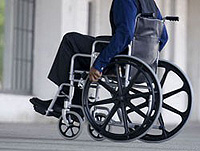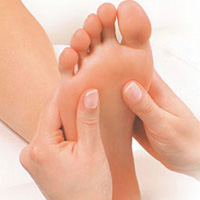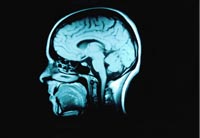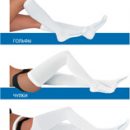What is paralysis? What are parailences? Answers to these questions you will find in the article.
Content
Paralysis
Parables are one of the types of human motor impairment and manifest themselves in its complete deposition (Greek. Paralysis - paralysis). In the event of not a complete loss of the motor function, but only the weakening of it to one degree or another, this disorder will be called - Parese (Greek. Paresis - Weakening, Relaxation).. Moreover, both in the first and in the second case, the impairment of the motor function is the result of the damage to the nervous system - its motor centers and (or) of the conductive paths of central and (or) peripheral departments.
 So, paralysis and paresa is a weakening or complete motion loss due to the damage to the nervous system. They must be separated from other motor disorders, in which the defeats of the central and peripheral nervous system are missing. So, for example, movements can be dramatically violated with the damage to the bone-articular apparatus, joints and their bags, with inflammatory lesions of muscles and tendons and their retractions that can limit the volume of purely mechanical reasons. Naturally, such disorders of movements cannot and should not be treated for paralymps or paresis.
So, paralysis and paresa is a weakening or complete motion loss due to the damage to the nervous system. They must be separated from other motor disorders, in which the defeats of the central and peripheral nervous system are missing. So, for example, movements can be dramatically violated with the damage to the bone-articular apparatus, joints and their bags, with inflammatory lesions of muscles and tendons and their retractions that can limit the volume of purely mechanical reasons. Naturally, such disorders of movements cannot and should not be treated for paralymps or paresis.
Often, motor disorders are due to various pains: the patient does not move with one or another limb in one or another direction, not because this movement is impossible, but due to pain syndrome occurring while driving. This phenomenon received the name of antalagic disorders (from Greek. Algos - pain). In addition, the concept of paralysis and passales cannot include such phenomena as ataxia, hyperkinesia, apraxyl, T. To. Such types of neurological disorders in which movements are stored, but are disorganized, indiscriminate, non-valuable character. In these cases, movements are preserved and their violations are high-quality, while paralysis and paresa suggest, based on their nature, only the quantitative nature of violations.
So, just above were paralysis, so to speak, in their «Pure» video. But besides this, there are cases, beyond any doubt being paralymps, but not entirely falling under the rigid framework given at the beginning of the definition. Paraliances and paresis are due to the primary muscle damage (such as, for example, at myopathies and amyotrophy, neuromuscular diseases (myasthenia), as well as neurosis, mostly hysterical. The end object of the action of motor nerves is muscle. The electrical impulse from the nervous end of the muscle is transmitted using a chemical reaction in a neuromuscular compound (synapse). The pulse will be released from the nervous end of the neurotransmitters, which, falling into the muscle tissue, cause it to reduce it. In case of violations of the synthesis of neurotransmitters, their chemicals, gender mechanisms will occur paralysis and paresis, but, in this case, they will not be due to the defeat of the nervous system.
Paraliances and paresa are divided into two large groups, different in nature. These are paralyts organic and functional. With organic, it is possible to identify the organic cause, as a result of which the nervous impulse will not reach the goal - muscles. With functional such reasons, it is not possible to identify. In the latter case, disorders are due to disorders in the cerebral cortex of the processes of excitation, braking, their relations and mobility.
You should take a few comments on paralysis names. If there is a sign of localization in the everyday conversation («Paralysis», «paralysis of fingers», and T. NS.) In medical practice, they are indicated, as a rule, according to the affected nervous structures: nervous plexuses, individual nerves, which is not entirely true, t.To. paralyzed muscles themselves, and not nerves. So when «Paralysis of facial nerve» paralyzed face muscles inervirovable. However, the nerve and therapeutic impact will be primary and the healing effect will be primarily directed to the nerve, and not on the muscles.









